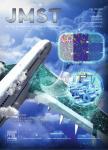版权所有:内蒙古大学图书馆 技术提供:维普资讯• 智图
内蒙古自治区呼和浩特市赛罕区大学西街235号 邮编: 010021

作者机构:D Printing GroupPLA Key Laboratory of Trauma and Surgical InfectionsJinling HospitalSchool of MedicineSoutheast UniversityNanjing 210009China Jiangsu Key Laboratory of 3D Printing Equipment and ManufacturingNARI School of Electrical and Automation EngineeringNanjing Normal UniversityNanjing 210042China
出 版 物:《Journal of Materials Science & Technology》 (材料科学技术(英文版))
年 卷 期:2021年第91卷第32期
页 面:105-120页
核心收录:
学科分类:08[工学] 0802[工学-机械工程] 080201[工学-机械制造及其自动化]
基 金:financial supports from the General Project of Military Logistics Research (No. CLB19J025) 333 High Level Talents Training Project of Jiangsu Province (No. BRA2019011) Distinguished Scholars Foundation of Jiangsu Province (No.JCRCB2016006) Key Technology R&D Program of Jiangsu Province(No. BE2018010 and BE2019002) Natural Science Foundation of Jiangsu Province (No. BK20180730) Nanjing Science and Technology Development Project (No. 201803051) Postgraduate Research&Practice Innovation Program of Jiangsu Province(KYCX20_0150)
主 题:4D printing Smart materials Product design Emerging directions
摘 要:Four-dimensional(4 D) printing technology is an extension of three-dimensional(3 D) printing technology that enables a 3 D-printed static structure to dynamically change its shape with time. Therefore, the resulting structure can undergo self-folding/unfolding assisted by some stimuli. This technology has made much initial progress in many industrial fields. Aiming to investigate the in-depth application value of4 D printing, this study reviews the recent research and application breakthroughs of 4 D printing in several emerging directions, including the simulation of plant and animal behaviors, smart tissue scaffolds and biomedical devices, food printing, digitalization of industrial art design, renewable energy, intelligent communication, soft electronics and robots, vehicle optimization, textile customization, and flexible machinery and mechanical structure. Based on the analyses of specific cases and processes, we present the current obstacles to large-scale applications and the future prospects.